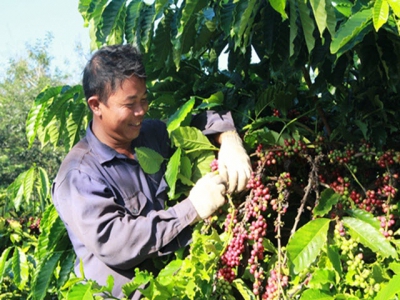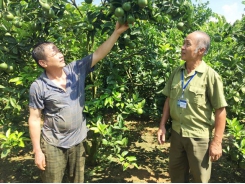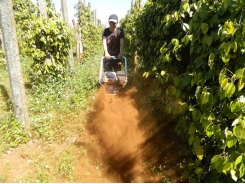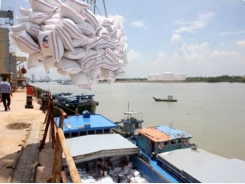VN coffee industry feeling the heat from lower prices

Since Vietnam mostly exports raw coffee instead of processed products, the sharp coffee price fall in the world market has had immediate impact on its exporters and growers.
Vietnam mostly exports raw coffee
Domestic coffee beans are now traded at VND34,200-34,400 per kilogram, or $1.47-1.48, the lowest since May 2016. The gap between Vietnam’s price offered for second-class Robusta black 5 percent broken and the price of November futures in London has decreased further to $70-100 per ton from $90-100 per ton in mid-August.
Coffee merchants said if the coffee price still stays at the low level for this crop, coffee growers may not continue growing coffee. They will give up coffee to grow other crops which can bring better profits.
Vietnam may export $1.5 million tons of coffee in the 2017-2018 crop with export turnover of $3 billion. If so, the coffee exports would increase by 0.8 percent in quantity, but decrease by 10.5 percent in value. This is attributed to the export price decrease, now at a 50-year low.
According to the Vietnam Cocoa and Coffee Association (Vicofa), Vietnam may export $1.5 million tons of coffee in the 2017-2018 crop with export turnover of $3 billion. If so, the coffee exports would increase by 0.8 percent in quantity, but decrease by 10.5 percent in value. This is attributed to the export price decrease, now at a 50-year low.
Regarding the output, Vicofa estimates that Vietnam would produce 1.55 million tons this crop, a slight increase of 100,000 tons over the previous crop.
Many farmers have shifted to grow durian and fruit trees which can bring higher value. However, as requested by MARD, Vicofa will maintain a stable coffee growing area of 600,000 hectares.
According to the Ministry of Industry and Trade (MOIT), the global coffee market still sees an oversupply because of the higher output of the 2017/18 crop and the expected output increase in the 2018/19 crop.
Observers also said they cannot see any signs of price recovery, which means that Vietnam would find it difficult to export coffee in the last months of the year.
Meanwhile, coffee is one of the key export items of Vietnam which brings $3 billion a year.
Analysts commented that any price fluctuations will affect Vietnam because it mostly exports raw materials (90 percent) which bring low added value. Only when Vietnam can export high-end products with high added value will it be able to control coffee prices.
Being one of the four biggest coffee exporters in the world, Vietnam still cannot exploit the vast market, which spends $500 billion a year on coffee products.
There are over 150 coffee exporters, but only a few process coffee and export coffee products under their brands.
Dao Duc Huan, director of the Rural Development Center, said Vietnam needs to do branding and position Vietnam’s coffee as high-quality products with traceable origin and certificate of quality.
“Building up Vietnamese high-quality coffee brand is an important solution to ensure the sustainable and effective development of Vietnam’s coffee value chain,” he said.
Related news
Tools

Phối trộn thức ăn chăn nuôi

Pha dung dịch thủy canh

Định mức cho tôm ăn

Phối trộn phân bón NPK

Xác định tỷ lệ tôm sống

Chuyển đổi đơn vị phân bón

Xác định công suất sục khí

Chuyển đổi đơn vị tôm

Tính diện tích nhà kính

Tính thể tích ao




 Vegetable, fruit exports hit 2.7 billion USD in…
Vegetable, fruit exports hit 2.7 billion USD in…  Rice exporters told to meet Chinese quality requirements…
Rice exporters told to meet Chinese quality requirements…